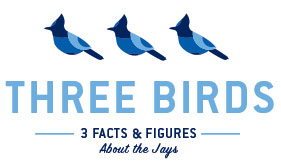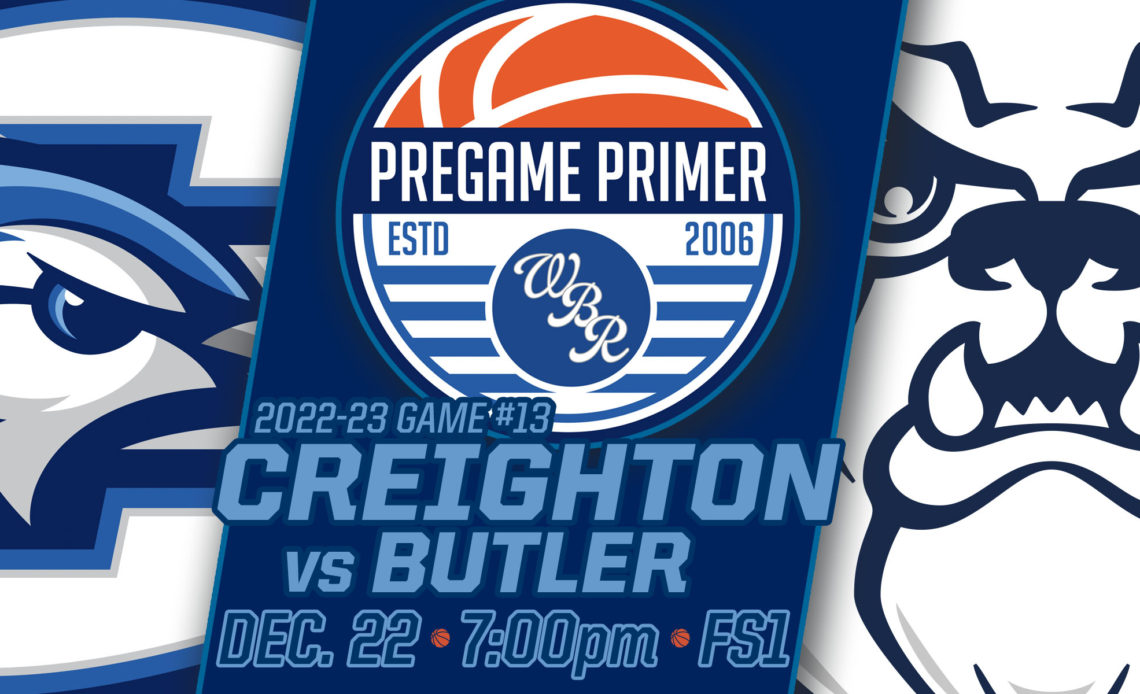With Creighton mired in a six-game losing streak after entering the season with the highest of expectations, my thoughts have wandered back to the 2009-10 team over the course of this week in between games. That group of Jays had overacheived to win a share of the regular season MVC title a year before with a roster full of talented sophomores, and with preseason hype surrounding the team they embarked on a challenging non-conference slate. They played true road games at a pair of ranked foes (#21 Dayton, who wound up winning the NIT title, #19 New Mexico, who rolled through the MWC and got a 3 seed in the NCAA Tourney) plus a true road game at perennial (at the time) Patrion League contender George Mason. They went to the Old Spice Classic over Thanksgiving and played #15 Michigan, plus a good Xavier team that went to the Sweet 16 and an Iona squad coached by Kevin Willard who won 21 games.
And they lost all six.
The weekend in Orlando, in particular, seemed to take the wind out of their sails. By December, they began to look like a team in disarray, failing to do many of the little things that Dana Altman’s teams had prided themselves on. By January, as the losses piled up, frustration mounted on and off the floor. By February, their star player (P’Allen Stinnett) was suspended for conduct detrimental to the team, and never played another game for the Jays. By March, they suffered the indignity of playing in a fourth-rate postseason tourney (the CIT) at their old run-down arena (the Civic). And by seasons’ end, their coach moved half way across the country for another job.
Flash forward to 2022, and there’s enough parallels to make you feel like you’ve seen this before. The huge expectations. The struggles against a challenging non-conference schedule. The mounting frustration.
There’s also some signs that point to the 2022-23 team being able to diverge from that path. They’ve shown how good they can be when they’re clicking on all cylinders. There’s no signs of splintering in the locker room. Mostly, three of the losses in their six-game skid have come without their most indispensible player in the lineup (and a fourth came with him playing at significantly less than 100%) — and that player, Ryan Kalkbrenner, is set to return on Thursday.
True freshman Fredrick King has improved by leaps and bounds since being thrust into the lineup. He had 38 total points and 10 rebounds in the first 10 games of his career, and then back-to-back double—doubles (16 and 11 against Arizona State, 16 and 10 at Marquette). That makes him the first CU freshman with multiple double-doubles in a season since Justin Patton had three in 2016-17, and the first true freshman to do it since Doug McDermott had nine in 2010-11.
Kalkbrenner’s missed games have been costly in the short-term. Their defense is built around funneling the ball toward the rim, where he’s there to block or alter shots; he covers up a lot of mistakes and poor defensive play by his teammates, as we’ve seen without him on the floor. Their offense isn’t necessarily built around him, but his size and efficiency at the rim (and constant threat of scoring on lob passes) creates room for spacing and penetration by their guards, and his offensive rebounding creates second chances. Most importantly, when their offense bogs down and they need a basket to stop a run, he’s a reliable high-percentage scoring option that they don’t have without him on the floor.
In the long term, his missed time might pay dividends if it has accelerated the growth of Fredrick King into a capable backup and reliable bench player. At present, that six-game losing streak is still staring them in the face.
Enter Butler. The Bulldogs are 8-4 in the first year of Thad Matta’s second tenure as head coach (he coached them for one year, 2000-01, previously). Their style of play is very different from what we’ve come to expect from the Bulldogs — they play faster and they shoot better than years past. Since joining the Big East, their adjusted tempo has been at least one point under the D1 average every year (and nearly five points less in each of the last three years). This year, their adjusted tempo of 68.6 is right at the D1 average. They’ve shaved nearly three seconds off their average possession length from the last two years of the LaVall Jordan era teams, with their offensive possessions lasting 17.3 seconds this year.
Their effective field goal percentage is 55.0%, 38th best in D1 after being 47.1% (295th) in that stat a year ago. They’ve made 35.7% of their threes (88th), up from 29.7% (333rd) a year ago — and 55.8% of their twos (36th), up from 48.9% (210th). They’ve shot 50 percent or better from the field eight times after hitting that mark just six times all of last season. In a similar fashion, Butler already has six games this season shooting 40 percent or better from three-point range, which was only done four times during the 2021-22 season.
All five starters are averaging double figures on the season, led by Chuck Harris (14.3 points per game). He led Butler in scoring each of the last two years, as well, and as a junior he’s become a more efficient shooter which has helped him up his numbers across the board. Harris scored a career-high 32 in early December against Tennesee Tech, making six threes. In two games against the Jays a year ago, he was held in check — he had 14 in the game in Indianapolis (4-of-9 shooting inside the arc, 2-of-6 outside), and in Omaha he had one lone point on just four shot attempts. But in 2020-21, he had 29 points in Omaha in the regular season finale, a game CU fans remember well for the way he torched their defense.
6’11” North Carolina State transfer Manny Bates (14.1 ppg., 6.7 rpg., 2.7 bpg.) is second in scoring and leads them in rebounds. He’s been impressive on both ends of the floor, with three or more blocks in eight games this season and three double-doubles. His best game came against an overmatched New Orleans squad (25 points on 12-of-15 inside the arc, 11 boards) but his other two double-doubles came against good power conference foes (16 and 10 against Penn State, 22 and 10 against Kansas State). Bates ranks among the top 20 nationally in both blocks per game and field goal percentage, and is an elite rim protector. He’ll give Fredrick King a heckuva test.
Jayden Taylor (13.8 ppg.), Simas Lukosius (11.3 ppg., 3.6 apg.) and Purdue transfer Eric Hunter Jr. (11.7 ppg.) round out their starting five. Among those, keep an eye on the 6’7” Lukosius — he shoots 43% from three-point range and when he gets hot, he’s tough to stop.
Those numbers by their starting five are impressive, but they need to be — Butler’s starters have accounted for 781 of the team’s 871 points scored. Creighton’s bench has been pretty short on production, but Butler’s been worse — in fact, their average of 7.5 bench points per game ranks dead last in D1. With that said, they hope the return of two transfers who were expected to be key contributors will help. Both Ali Ali and Jalen Thomas made their respective Butler debuts in Saturday’s game with No. 3 UConn. Ali had been sidelined with concussion symptoms and nasal surgery, while Thomas was being treated for a pulmonary embolism. Ali led Akron in scoring, three-point percentage and assists last season, earning second-team All-MAC honors.
Creighton’s defense is definitely better with Kalkbrenner on the floor, but even without him they’ve been pretty solid (albeit markedly worse). Against good defensive squads, Butler has had a hard time scoring — they had just 45 points with 23 turnovers against Tennessee, and 46 points against UConn. Both of those teams are quite a bit better defensively than the Jays (and Tennessee has the top-ranked defense in the country), but their flaws were exposed in those games. They compounded poor shooting with a lot of turnovers and almost no offensive rebounds — giving their opponent a huge advantage in the number of shots they attempted. For a team who doesn’t draw many fouls, it left Butler with precious few ways to score.

- Tip: 7:00pm
- Venue: CHI Health Center Omaha
- TV: FS1
- Announcers: Matt Schumacker and Nick Bahe
- In Omaha: Cox channel 78 (SD), 1078 (HD); CenturyLink Prism channel 620 (SD), 1620 (HD)
- Outside Omaha: FS1 Channel Finder
- Satellite: DirecTV channel 219, Dish Network channel 150
- Cable Cutters: Available on all major streaming platforms
- Streaming on the Fox Sports app and website
- Radio: 1620AM, 101.9FM
- Announcers: John Bishop and Tyler Clement
- Streaming on 1620TheZone.com and the 1620 The Zone mobile app

- Jayden Taylor scored a season-best 20 points vs. BYU in the Battle 4 Atlantis, and has been in double figures in 10 of the team’s 12 games this season. Ranking third in scoring, he’s also second in both steals and free throw percentage. Taylor has averaged 17.2 points per game this season in Butler’s five games away from Hinkle Fieldhouse.
- 6’4” guard Eric Hunter, Jr. averages 35.2 minutes per game, which is Top 50 nationally. He leads the team in steals and is second in blocks; he had five steals vs. The Citadel in November. Hunter had his first career double-double at Cal (13 points, career-high 11 rebounds).
- Butler is committing only 11.9 fouls per game, which is the fewest in the nation.

- Baylor Scheierman has scored 152 points in his first 12 games as a Bluejay. Since 1995-96, that’s tied for the third-most by a Creighton newcomer — only Marcus Foster (229) and Ryan Hawkins (170) scored more, while oddly Mo Watson and Ryan Nembhard scored an identical 152 points in their first 12 games. (Behind them? Two guys named Doug McDermott and Justin Patton, who scored 151 and 148 respectively).
- Scheierman has grabbed 10 or more rebounds in eight of his first 12 games this season, and has seven double-doubles to date. The seven double-doubles rank third nationally, while his 8.75 defensive rebounds per game are most in the country, ahead of players with huge rebounding reputations — Oscar Tshiebwe (8.38) and Zach Edey (8.36). His current 9.8 rebounds per game average is the best mark by any Bluejay since Benoit Benjamin averaged 14.1 rebounds per game in 1984-85.
- Creighton is attempting to avoid its first 0-2 start in Big East play since 2014-15. In 2020-21, Creighton lost its league opener to Marquette (as it did this year), then responded with six straight wins and eventually finished second in the Big East with a 14-6 league mark. In 2017-18, the Bluejays lost their league opener to Seton Hall, then won its next four games en route to a 10-8 league finish that was good for third place.

Creighton is 15-11 all-time vs. Butler in a series that dates to a 27-22 Bluejay win in 1933. The home team has won the last 10 meetings not played on a neutral site. Creighton is 10-2 all-time in Omaha against the Bulldogs, including an 8-1 mark since the schools became Big East rivals. Five of the last six games played in Omaha have been double-digit Bluejay victories.
In their most recent meeting, the Jays won a 54-52 grinder in Omaha last February.

On December 22, 2013, the Jays’ defense clamped down on a good Cal team and held them to 54 points in a 68-54 win. From Ott’s Thoughts the next day:
“‘Creighton might be playing some of its best defense not of the season but in years.’ That’s a Sunday evening tweet from Omaha World-Herald reporter Steve Pivovar. He’d know; no one outside of the program has seen more Creighton men’s basketball games and practices than Piv since he started covering the CU beat. So, during the second half of Creighton’s 68-54 win over California, it was settling that Piv reconfirmed the collective assessment of Creighton’s defensive effort.
Speaking of which, Cal’s collective length gave Doug McDermott trouble, but he reached deep into his bag of tricks to lead the Jays yet again. Creighton’s All American missed six of his first seven shots and struggled to get on track offensively. He didn’t connect on a three-point attempt all night, just the second game all season in which he failed to score from behind the arc. But McDermott didn’t let his early inefficiency get the better of his all-around game, and eventually he did what Dougie does — get buckets.
It started innocently enough; an offensive rebound led to a foul, which led to a trip to the free throw line for two shots with about 4 minutes to play in the first half. McDermott toed the line, knocked in both shots to double his output from 2 points to 4. The final few minutes of the half would find McDermott connect on a point-blank attempt thanks to a nice pass from Austin Chatman; hit a jump shot off a feed from Devin Brooks; and tip-in a missed three-point attempt by Jahenns Manigat as the buzzer sounded. Just like that, Doug went into the tunnel with 10 points, leading all scorers on both teams.
He’d replicate his scoring output in the second half, displaying an array of step-back baseline fade-away jumpers and other finesse finishes en route to a game-high 20 points. Sure, McDermott forced a few things, but they came in the flow of the offense. Cal’s frontline combination of Richard Solomon, David Kravish, and Kameron Rooks made things difficult for McDermott at times. But having him on the floor alongside Ethan Wragge for extended minutes made defensive decisions an issue for Montgomery’s team.”
The Bottom Line:
ESPN’s BPI’s gives the Jays a 76.8% probability of victory, while KenPom and Vegas odds both favor the Jays by 8. The return of Kalkbrenner to the lineup, even in a small capacity, and the return to their home floor — just one of their last eight games have been in Omaha — will give them a jolt.
Creighton 77, Butler 68

